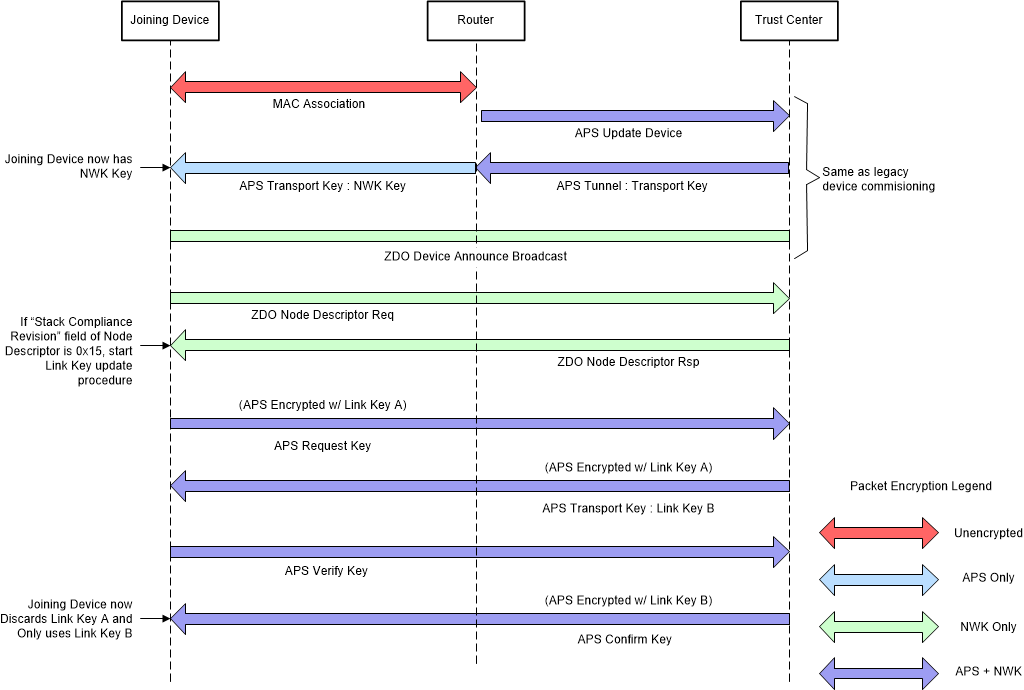SWRA615A June 2019 CC1352P , CC1352R , CC2530 , CC2531 , CC2538 , CC2652P , CC2652R , CC2652R7 , CC2652RB , CC2652RSIP
2.3 Trust Center (TC) Link Key Updates
R21 devices joining a Zigbee 3.0 centralized network must initiate a TC Link Key update procedure upon joining the network. This unique TC Link Key is used for all encrypted APS-layer communication instead of the well-known counterpart. The Node Descriptor packet that is sent during network association procedure indicates the joining device's Zigbee version. R21 coordinators (acting as a trust center) can be configured to accept or reject legacy devices that do not initiate the TC Link Key update procedure. Note the mandatory unique TC Link Keys for each capable device leads to an increased flash requirement on the coordinator.
